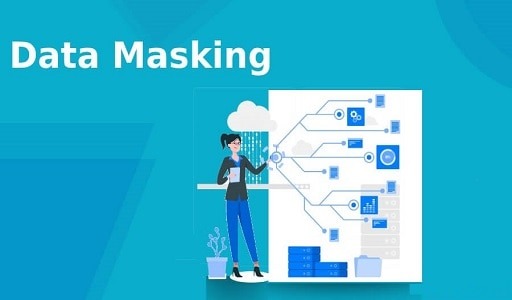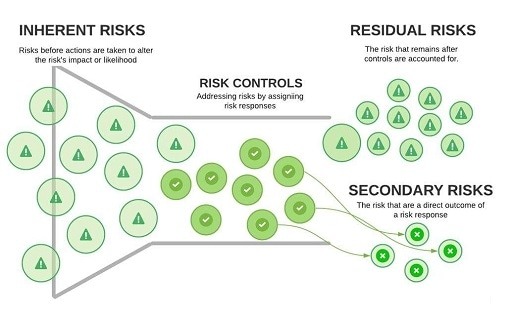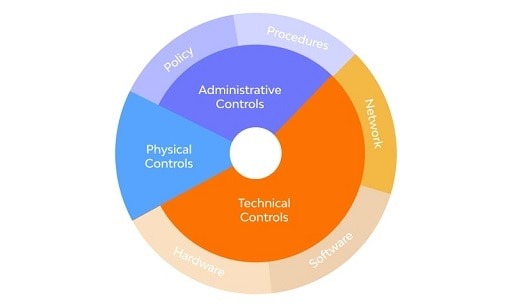What is BlackCat Ransomware? Everyone is aware of how terrifying ransomware can be. And now, an ingenious new strain of ransomware known as BlackCat poses an even greater threat.
BlackCat ransomware, which operates differently than other types of cyberattacks, uses a robust programming language that is difficult to decode. What exactly is the BlackCat ransomware, and what are the chances that you will be able to avoid being affected by it?

What is the BlackCat Ransomware all about?
BlackCat is a cyberattack model known as ransomware delivered as a service (RaaS). The people behind the BlackCat ransomware attack compromise data in a computer system and then demand payment from the people whose data they want in exchange for decrypting it. November 2021 was the month that saw the introduction of the BlackCat ransomware for the first time.
This is not your typical hacker group at all; it’s called the BlackCat. It collaborates with affiliates from a variety of cyberattack groups and offers those affiliates a payout of up to 90 percent of their earnings. Other RaaS programs don’t offer more than 70 percent, so this is a significant selling point for us.
Hackers from rival gangs, such as BlackMatter and REvil, are eager to collaborate with the BlackCat because of the generous compensation offered by the BlackCat.
Although BlackCat ransomware is most commonly found in Windows, it is not exclusive to that operating system and can appear in others as well.
How does the BlackCat ransomware actually work?
The BlackCat ransomware uses a link to a malicious website or an email that has been infected with malware to trick its victims into downloading it. Because it is so powerful, it moves really quickly throughout the entire system.
BlackCat ransomware utilizes a triple extortion tactic. The hackers determine which part of the system is the most vulnerable and then exploit that flaw to gain access. After gaining access, they immediately collect the most important information and decode it while still inside the system. They then proceed to make changes to user accounts in the Active Directory of the system.
If BlackCat is able to successfully compromise the Active Directory, it will be able to configure malicious Group Policy Objects (GPO) that will process the ransomware data. In order to bypass a barrier, the next step is to turn off any security infrastructure that may exist within the system. They proceed to infect the system with PowerShell scripts despite the fact that there are no security defenses in sight.
As a result of having the upper hand, the attackers proceed to demand a ransom from the victim with the threat of damaging the data decryption keys, initiating a distributed denial-of-service attack, or even better (from their point of view), leaking the data to the general public. The victim is placed in an extremely precarious position as a result of each of these behaviors. In most circumstances, they are compelled to make the payment.
The scenario described above is not unique to the BlackCat; other RaaS assaults also follow the same pattern. But one thing that sets BlackCat ransomware apart from other similar threats is the fact that it is written in the Rust programming language, which is a method of programming that keeps errors to a minimum. It provides a safe memory for data assets and prevents the inadvertent discharge of stored information.
The BlackCat’s use of the Rust programming language enables it to carry out the most complex attacks while being relatively unobtrusive. Because the system that the attackers are using is so well protected, victims are unable to access it.
How to Protect Yourself from the BlackCat Ransomware attacks
Ever since it was founded, the BlackCat hacker group has been steadily advancing its reputation as a formidable adversary in the world of computer security.
BlackCat, unlike other attackers, constructed its website in the public domain rather than the dark web. Other attackers build websites to leak data on the dark web.
They are warning their customers that if they do not cooperate and pay up, they will be subject to the same terrible financial losses as the other customers whose stories are detailed on their website.
There is yet a chance of success. You may protect your applications from BlackCat ransomware by taking basic precautions and protecting them with security measures.
-
Encrypt Your Data or Information
Encryption of data is predicated on the idea that even if unauthorized users gain access to the data in question, they will be unable to compromise it in any way. Your data are no longer stored in plaintext but rather in ciphertext, and this is the reason why. In order to access data once it has been transformed from a non-encrypted to an encrypted state, you will need encryption keys.
Data that is protected using modern encryption technology is even more secure now than it was before. It does this by employing algorithms, which guarantee the authenticity and integrity of the data.
When a message is received, the system first authenticates it to determine where it came from, and then it validates its integrity by examining it for any signs of tampering or corruption.
Encrypting information allows you to protect it while it is being transferred as well as when it is stored. This indicates that even if ransomware manages to steal your data, it should not be possible to read it.
-
Install Updates
The practice of maintaining cybersecurity is an ongoing endeavor. Apps are being developed with increased levels of security, but hackers are still working to uncover vulnerabilities in such systems. Because of this, the engineers continue to upgrade the systems in an effort to tie up any loose ends.
It is essential that you always keep the operating systems and applications that you use up to date by installing any available updates. If you fail to do so, you leave yourself vulnerable to cyber threats, which cybercriminals could exploit to launch ransomware attacks against you.
It is very simple to neglect to install any available updates. You can avoid this situation by keeping a calendar to remind you to update your gadgets on a regular basis or by setting up automated reminders.
-
Create a backup of your data
It is advisable to take precautions against probable assaults on your system in light of the increasing number of data breaches that are occurring. One method that is certain to achieve this objective is to create a backup of your data by moving it from its primary storage to its secondary storage.
Then, divide the primary storage system from the secondary storage system, such that even if the primary system is breached, the secondary system will not also be compromised. You will always have the secondary data as a backup in the event that the original data becomes corrupted or lost.
You have the option of backing up your data in a variety of locations, including hybrid services, cloud services, software solutions, and hardware devices. Cloud backup services provide a number of benefits and security features that are not offered by traditional backup systems. These benefits and features include: Hybrid backups allow you to mix traditional solutions with cloud-based solutions, which is a common requirement for some businesses.
-
Use Access Control Systems
Leaving your network’s doors open and inviting anybody and everyone in is the surest way to get hit by the BlackCat ransomware attack. When you implement an access control system that monitors the traffic to your network, particularly the individuals and devices that wish to get access, you will be able to reap the benefits of a more robust cybersecurity system.
An efficient access control system employs authentication and authorization processes to investigate individuals and devices, making certain of their safety before permitting them to use your application. These processes are used in conjunction with one another. Attackers will have a difficult time breaking into your system if you have a system like this in place.
-
Integrate Multi-factor Authentication
The practice of coming up with robust passwords is an essential component of a robust cybersecurity culture. The more complex the password, the more difficult it will be to decipher. The BlackCat attackers, on the other hand, are not amateurs when it comes to finding out passwords through methods such as brute force attacks and similar methods.
Even after developing secure passwords, you should take security one step further by utilizing multi-factor authentication (MFA). Before allowing people to access your system, it requires at least two different verification credentials from each user.
A One-Time Password is one of the more prevalent components of multi-factor authentication (OTP). If the BlackCat manages to break into your account and steal your password, they will be required to submit the OTP that your system creates and sends to a phone number, email address, or any other application that you have already connected to the procedure. They won’t be able to sign in if they can’t get a hold of the one-time password (OTP).
Use a Preventative Strategy to Avoid Being Affected by the BlackCat Ransomware
The fact that a powerful hacking outfit such as BlackCat exists demonstrates the need to keep sensitive data secure. If you take the required safeguards, however, the likelihood that your system will be hacked by an adversary, regardless of how proficient they may be, will be significantly reduced.
Establishing cyber defenses in advance is an important step to take in order to ensure the safety of your digital assets. Stay one step ahead of the BlackCat by predicting the attack they will launch and preparing precautionary measures to close any loopholes that may exist in the various entrance points.
Would you like to read more about BlackCat Ransomware-related articles? If so, we invite you to take a look at our other tech topics before you leave!










